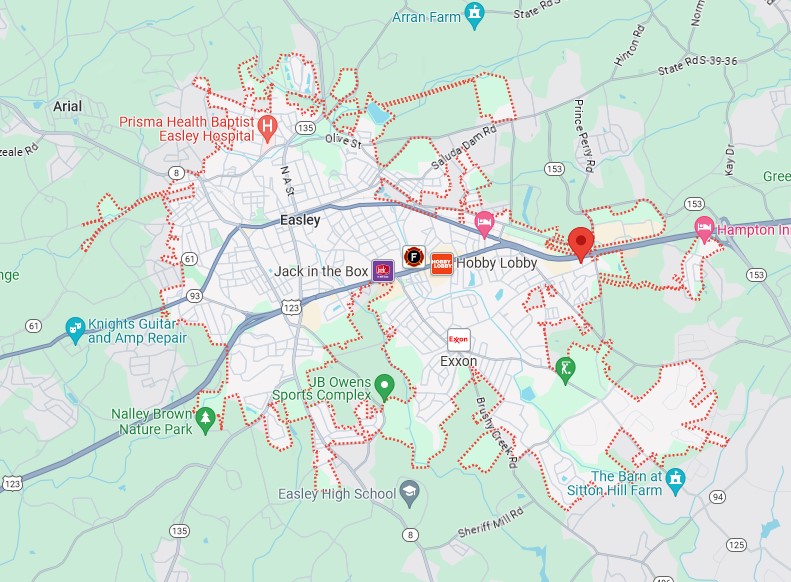Annexation Law Is The Problem
January 10, 2024
By Alex Saitta
Introduction:
You may have read, in a 6 to 0 vote the county council passed a resolution or request of the municipalities to do the following: cease any and all annexations over the next 180 days, coordinate with the county to better manage growth and explore the idea of a joint county/ municipalities planning commission to help do that.
I voted "Yes" on this for it is a step in the right direction, mainly, because asking the municipalities to take a breather from annexing is a wise request. I hope they will consider it.
What typically goes on, a developer comes in, buys a track of land near the city, the city annexes the land, extends utilities to the track and a X number of homes are built. You can look at this 20 armed octopus, also known as the city of Easley, and see how hap-hazard the unbridled annexation process has become as the cities seek to grow revenue at any cost.
Annexation:
At the root of the issue is in the state annexation law. This needs to be the focus. It is unbalanced and makes it too easy for municipalities to annex property without much thought of infra-structure, citizen input or how it affects the county. State law 5-3-10 is the annexation code and there are 7 or 8 different ways for a municipality to annex property, without much or any public input requirement nor does the county government have a say.
Proposed Bills:
There have been two bills proposed in the SC House (one by Thomas Beach in fact, and hopefully the legislature will consider adopting some of the ideas put for in both of these proposals.
The thrust of the bills include these points:
1) Balance the law to make it as easy to deannex property as it is to annex it into a municipality.
2) All annexations/ dennexations should require public hearing by the municipality and the county. Those being annexed or deannexed need to be told what is going on and be formally heard.
3) When a developer or citizens petition to be annexed to/ deannexed from a municipality that petition should be filed with the city and the county as well. This way both the city and county will have to approve the annexation, not only the municipality. It should be a more collaborative effort where both the county and municipality sign off on the change of both their lines.
4) Legal standing, right now, the counties have none. If something runs afoul of the law in the process, the county has no standing in court. Both bills give legal standing to the county in both annexations and deannexations.
5) Often times municipalities will refuse to offer utilities to land owners unless the owners agree to annexation. Or the muni will promise the owners the utilities they seek, but once their property touches city limits, it is automatically annexed. Both bills prohibit this aggressive use of utilities in the annexation process. Finally, if you deannex, it should be unlawful to take utility services away from those property owners leaving the municipality.
Sewer Capacity:
Sewer capacity is also tied into the mix of growth and annexation and all these subdivisions sprouting up. DHEC requires when a plant reaches 80% of its capacity, the utility has to create a plan to expand the capacity. At 85% of use, construction to expand capacity needs to begin. Waivers or delays can be applied for.
It is my understanding both Clemson and Easley are operating above those levels and have gotten waivers to continue to operate without plans underway to expand capacity. Both are running into and through sewer permitting constraints.
For all these reasons, it is a good time to examine sewer capacity and future needs, slowing down the growth and the annexation law at the state level.


